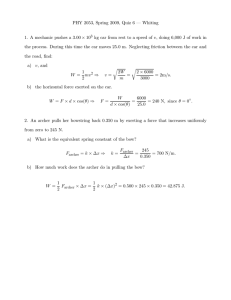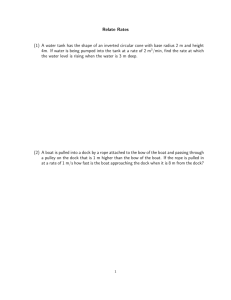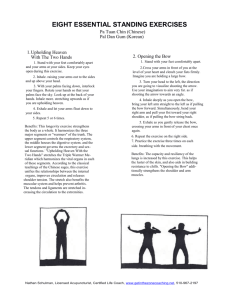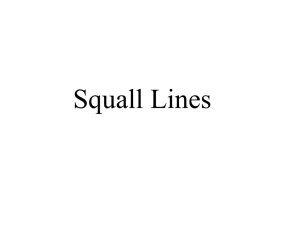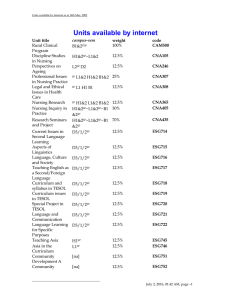Physics Example Problems & Solutions - Chapter 6
advertisement
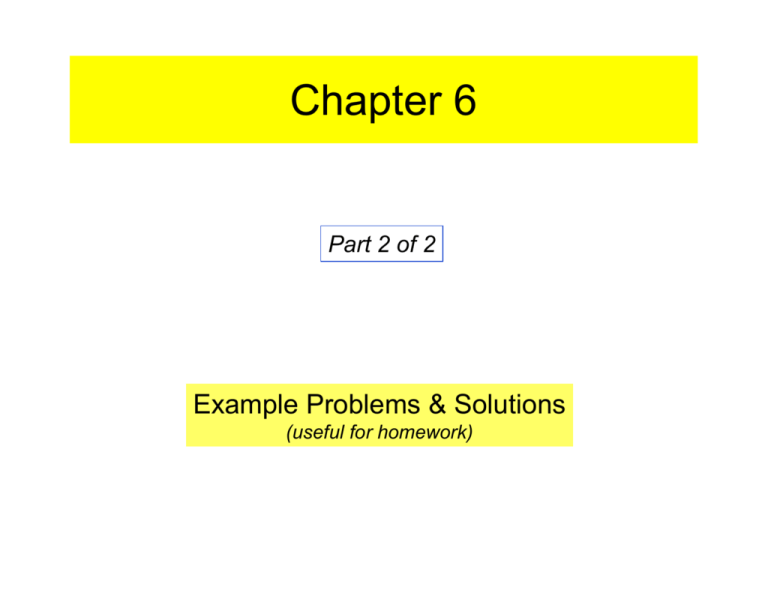
Chapter 6 Part 2 of 2 Example Problems & Solutions (useful for homework) 47 • 47. A roller coaster (375 kg) moves from A (5 m above the ground) to B (20 m above the ground). Two nonconservative forces are present: friction does -2x10^4 J of work on the car, and a chain mechanism does +3x10^4 J of work to help th car up a long climb. What is the change in the car’s kinetic energy, DeltaKE = KE(final) – KE(initial), from A to B ? 53 • 53. At a carnival, you can try to ring a bell by striking a target with a 9-kg hammer. In response, a 0.4-kg metal piece is sent upward toward the bell, which is 5m above. Suppose that 25% of the hammer’s kinetic energy is used to do the work of sending the metal piece upward. How fast must the hammer be moving when it strikes the target so that the bell just barely rings? 61 • 61. The motor of a ski boat generates an average power of 7.5x10^4 W when the boat is moving at a constant speed of 12 m/s. When the boat is pulling a skier at the same speed, the engine must generate an average power of 8.3x10^4 W. What is the tension in the two rope that is pulling the skier ? 63 • 63. The drawing (page 193, problem 63 in your text book) shows the force-versusdisplacement graph for two different bows. These graphs give the force that an archer must apply to draw the bowstring. (a) For which bow is more work required to draw the bow fully from s=0 to s=0.5 m? (b) Estimate the additional work required for the bow identified in part A compared to the other bow.

